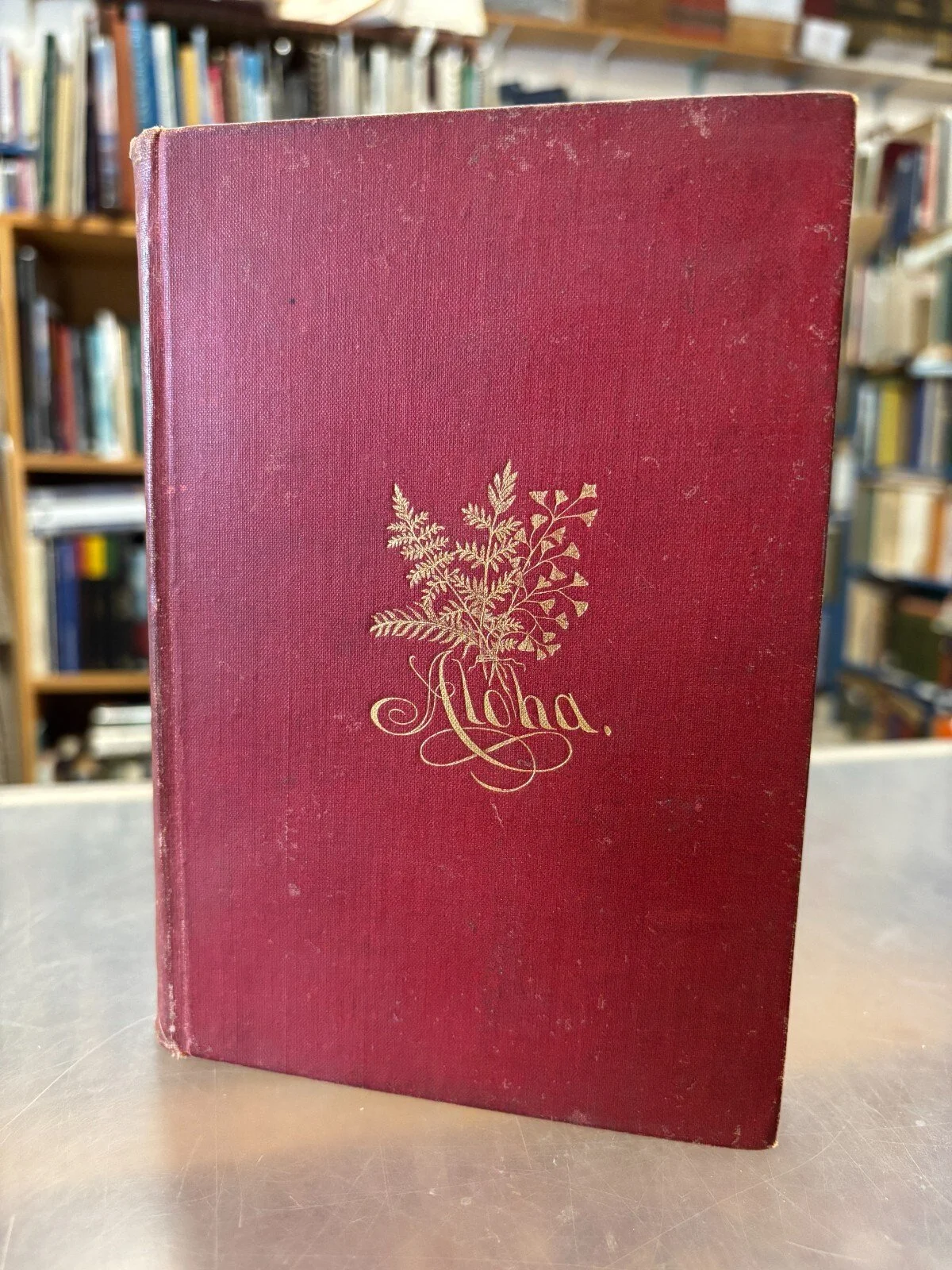 Image 1 of 9
Image 1 of 9

 Image 2 of 9
Image 2 of 9

 Image 3 of 9
Image 3 of 9

 Image 4 of 9
Image 4 of 9

 Image 5 of 9
Image 5 of 9

 Image 6 of 9
Image 6 of 9

 Image 7 of 9
Image 7 of 9

 Image 8 of 9
Image 8 of 9

 Image 9 of 9
Image 9 of 9










George Leonard CHANEY / Aloha! A Hawaiian Salutation 1888
$175.00
In January 1876, Chaney, his wife Caroline, and their five-year-old son traveled to the Hawaiian Islands for a four-month visit. Upon their arrival in Honolulu, they were hosted by Caroline's cousin, Henry Alpheus Pierce (HAP) Carter. HAP Carter was the son of Captain Joseph Oliver Carter, the family's Pacific seafaring merchant captain. Chaney memorialized this Hawaiian visit four years later in his book Alo’ ha! A Hawaiian Salutation. The book was a travel log, including commentary on Chaney's interactions with locals, expats, and Christian missionaries. His reflections on the impact of 50 years of Christian missionary work on the local Hawaiian population revealed the centrality that Chaney positioned Christianity as the desired social and moral foundation for society. He wrote And it is not enough to justify and glorify all that has been done for them [by Christian missionaries] that in half a century they have risen from superstition, war, and ignorance to the condition of peace among themselves and with all mankind, freedom from idolatry and human sacrifice, general comfort and the nearest approach to universal education known among any people? Nearly every adult upon the island can read and write. Since Chaney's steamer ship, the Granada, served Sydney, Honolulu, and San Francisco, it is reasonably assumed that he visited San Francisco's Universalist church and the gravesite of Rev. Starr King on the church grounds. Upon the Chaneys' return to the United States, they visited the Philadelphia Centennial Exposition. Little else is known of their travel itinerary. Chaney resumed his Hollis Street pastoral duties in October 1876.
In January 1876, Chaney, his wife Caroline, and their five-year-old son traveled to the Hawaiian Islands for a four-month visit. Upon their arrival in Honolulu, they were hosted by Caroline's cousin, Henry Alpheus Pierce (HAP) Carter. HAP Carter was the son of Captain Joseph Oliver Carter, the family's Pacific seafaring merchant captain. Chaney memorialized this Hawaiian visit four years later in his book Alo’ ha! A Hawaiian Salutation. The book was a travel log, including commentary on Chaney's interactions with locals, expats, and Christian missionaries. His reflections on the impact of 50 years of Christian missionary work on the local Hawaiian population revealed the centrality that Chaney positioned Christianity as the desired social and moral foundation for society. He wrote And it is not enough to justify and glorify all that has been done for them [by Christian missionaries] that in half a century they have risen from superstition, war, and ignorance to the condition of peace among themselves and with all mankind, freedom from idolatry and human sacrifice, general comfort and the nearest approach to universal education known among any people? Nearly every adult upon the island can read and write. Since Chaney's steamer ship, the Granada, served Sydney, Honolulu, and San Francisco, it is reasonably assumed that he visited San Francisco's Universalist church and the gravesite of Rev. Starr King on the church grounds. Upon the Chaneys' return to the United States, they visited the Philadelphia Centennial Exposition. Little else is known of their travel itinerary. Chaney resumed his Hollis Street pastoral duties in October 1876.
